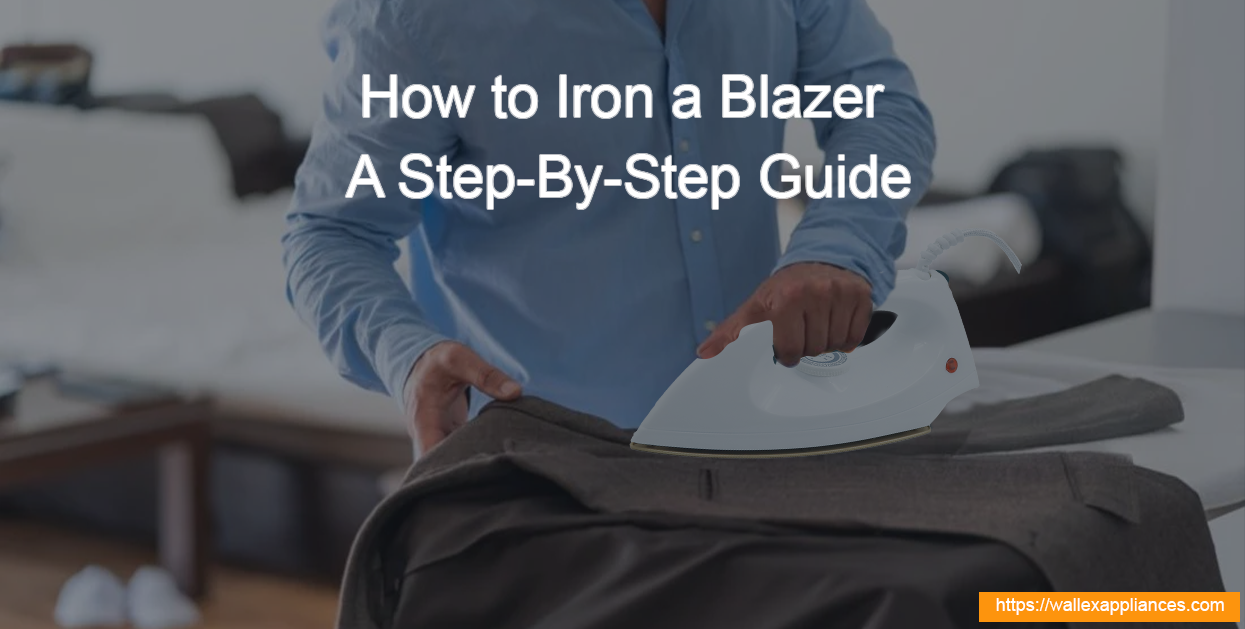How to Iron a Blazer and Suit: A Complete Guide
Imagine you are sipping your coffee in the morning while looking at your closet and find your favorite blazer lying there wrinkled and in a bad state. It’s only two hours until your big presentation, but your able-fitting suit is now a wreck. Sound familiar? It’s happened to all of us at some point of time – having to look at creased formal clothing and considering just wearing something else instead.
It is true that a lot of us don’t bother ironing our blazers and suits since we don’t want to ruin their expensive fabric. Luckily, following the correct approach can let you achieve professional results at your own home. In this article we will let you figure out how to iron a blazer and make it easy for you.
There are many types of iron for clothes that are currently available and will help you make a sensible choice depending on your particular needs.
Can You Iron a Blazer?
Compared to basic cotton shirts, blazers are not flat but have a structured design, insides and usually special materials that should be handled carefully. The truth is that ironing most blazers at home is possible as long as you understand how your garment should be ironed.
You can keep the style sharp or make it look sloppy, depending on things like your shoulder lines, lapels and the crispness of the suit’s edges. It’s important to try to shape your garment the way it was put together, rather than against the construction.
Know Your Fabric Before You Start Finding Answers to Can I Iron a Blazer?
Check the under-side of your blazer and the inside of the little care label before starting ironing. Just one tag is all you need to do great ironing as it will give you the crucial information about the fabric. This helps you in deciding the ironing methods and temperature that you need to set. Modern irons come with different settings according to the fabric like cotton, linen, polyester, synthetic, wool etc. The essential advice is, if you are not sure how to iron blazer and how much heat to use, start small and increase the heat step by step.
Learn the Right Process to Iron a Blazer Like a Skilled User
Want to learn the best method for ironing a blazer? This is the easy-to-follow route:
The first step is to tidy up where you are working.
Prep Your Workspace: Place the ironing board so you are comfortable with it and clean your iron. Supreme coverage is only possible if your water reservoir is full and the setting matches your fabric.
Focus on the Details: Lay the collar out and iron from the center to the edges while keeping the curve in place. For the lapels, start at the shoulder and work toward the point, making sure the fabric isn’t stretched but is still firm.
Move on to Dealing With the Shoulders: Many people make this mistake. Do not use heat from an iron while the shoulder pads are over your jacket. Place your blazer narrow side down on the board and press the fabric in a way that moves around the collar, without lying the lapels completely flat.
Master the Sleeves: Angle the sleeves in front of the ironing board so that the seams match and lay the sleeve flat and always paying attention to the creases. Be very careful around the buttonholes at the cuff if your blazer has them.
Finish the Essay With the Body Iron Suit Jacket: Lay your iron over the pockets and buttons and be careful not to iron straight over them. On the back of your blazer, press with the board’s wide part to live up the blazer’s natural shape.
When to Iron vs. When to Steam vs. When to Call the Professionals
While learning how to iron a suit it is important to recognize when to stick to basics and when to do something else. It’s handy to have a handheld steamer on hand if you want a fast refresh or work with thin or fragile materials nearby.
If your wrinkles are tough or your fabric very delicate, use a pressing cloth. This thin barrier (a clean cotton towel works perfectly) protects your garment while still allowing heat and steam to penetrate.
Can you iron a suit? Sometimes the answer is no and it would be ideal to give up. If the jacket is finely designed or uses a material you’re not ready to treat, you should have it ironed by a professional. They have the right skills, experience and equipment for any difficult garments.
Can you Iron Blazers With Standard Home Equipment?
Absolutely! It’s possible to achieve professional results with inexpensive tools. Most blazers can be handled well by a home iron that is adjustable and includes steam output. What really matters is being patient and practicing certain skills, not having costly tools.
Things You Should Know About Suit Jacket Care
When it comes to how to iron suit jackets keep in mind that its structure is often greater than that of a regular blazer. The process is similar, but you'll want to be even more careful around areas like the chest canvas (the internal structure that gives the jacket its shape) and any hand-finished details.
Caring for Your Blazer: How to Keep it Looking Great
Hang your blazers on supportive hangers that are strong and keep the shoulders of your garments from stretching. Open them up to let the air reach them and smooth out any tiny wrinkles just after you wash them.
Using a good garment brush on your clothes helps clear away dirt and maintain the original threadiness.
Final Words
It’s not very complicated to look after your blazers and suits, as long as you are mindful and value the clothes you own. By following these tricks, you won’t find yourself in the morning closet stress, questioning if you have time to iron your jacket.
Frequently Asked Questions
Q1: Should I use steam while ironing my blazer?
Ans: Yes, but avoid direct steam on delicate fabrics.
Q2: How do you iron a blazer without burning it?
Ans: Use a low to medium heat, place a press cloth between the iron and the fabric, and avoid pressing too hard.
Q3: How often should I iron my blazer?
Ans: Only when needed—typically after wearing 3–4 times or when noticeably wrinkled.
Q4: Can I iron all types of blazers in the same setting?
Ans: No

